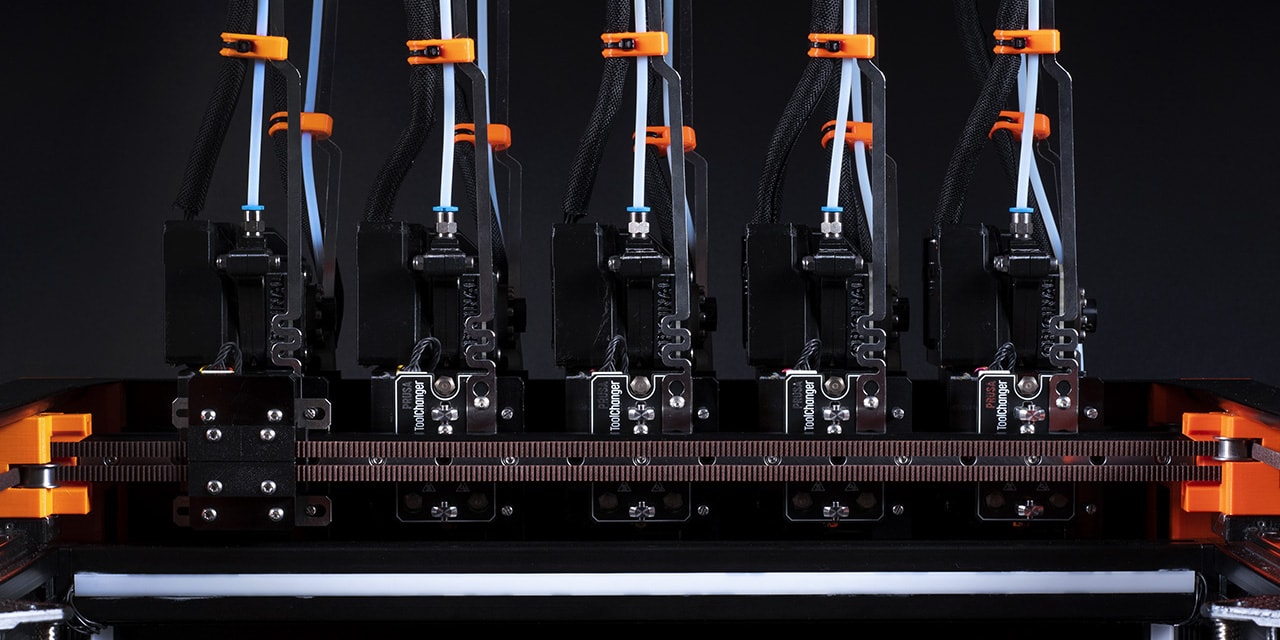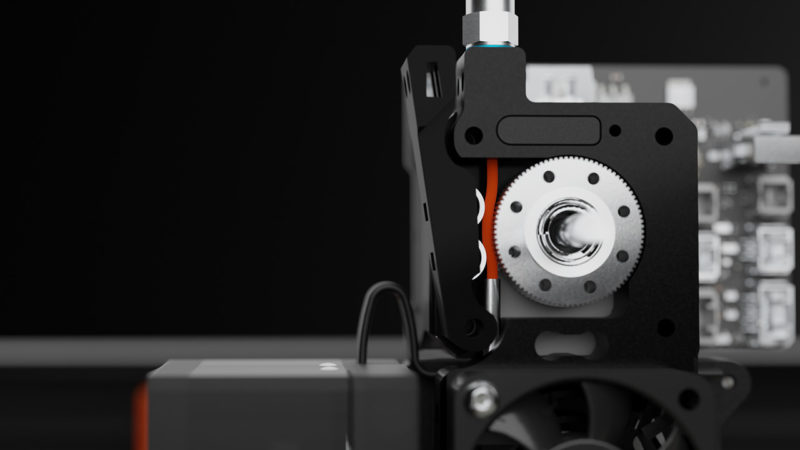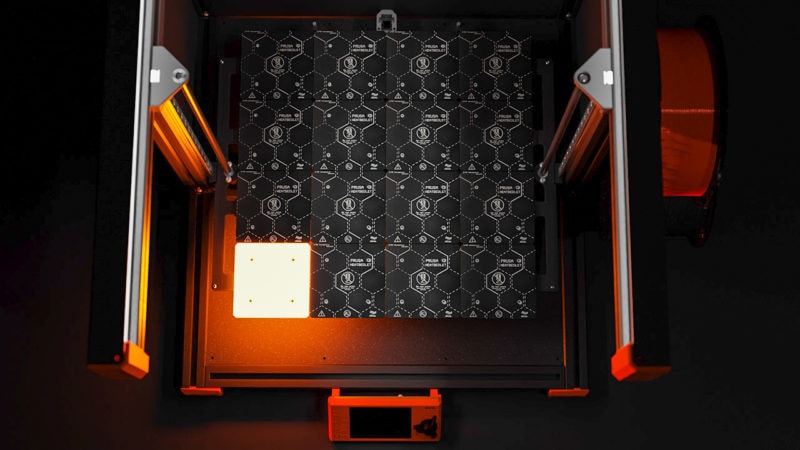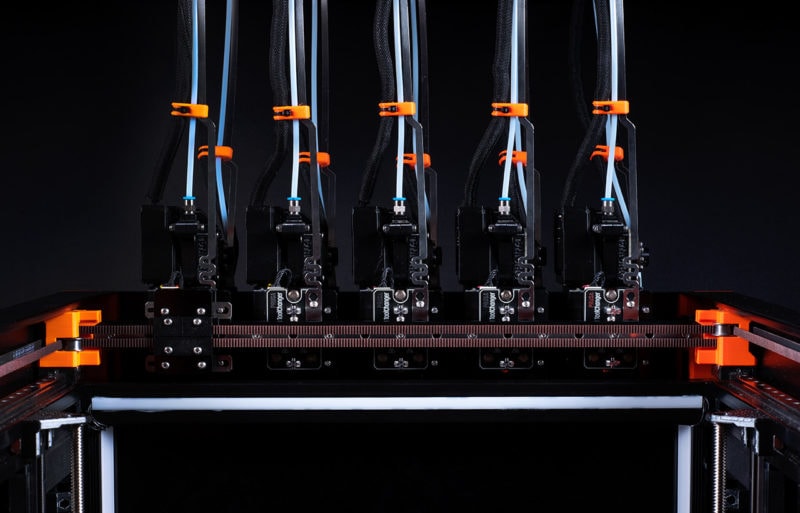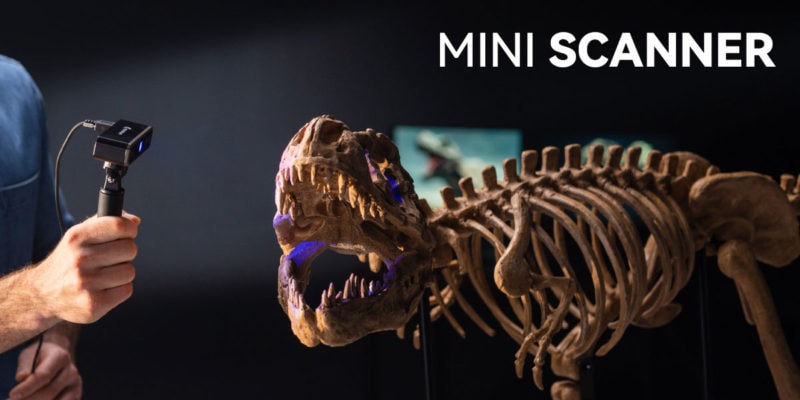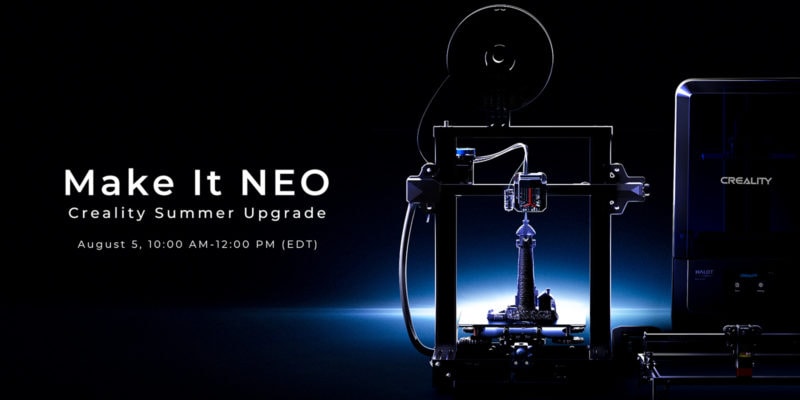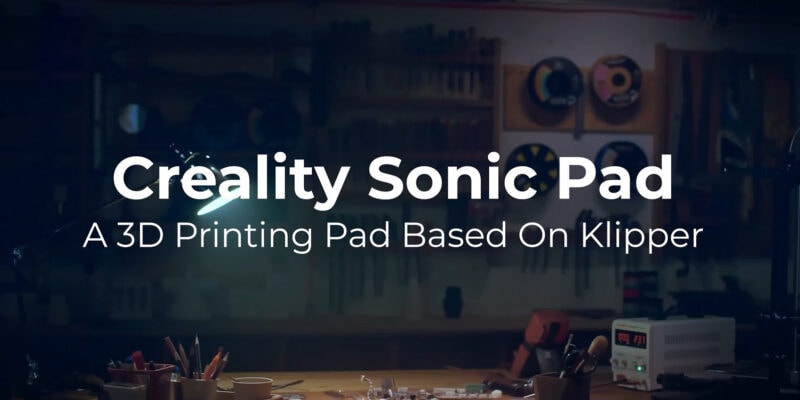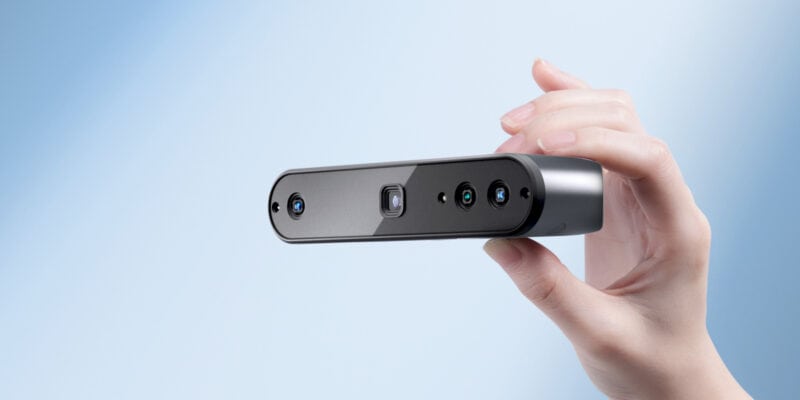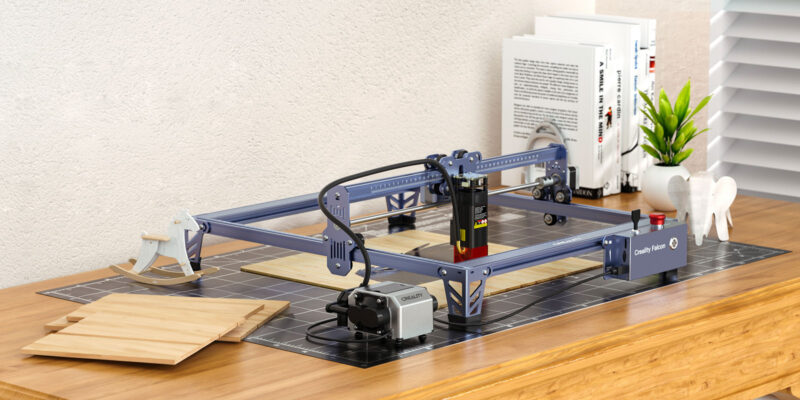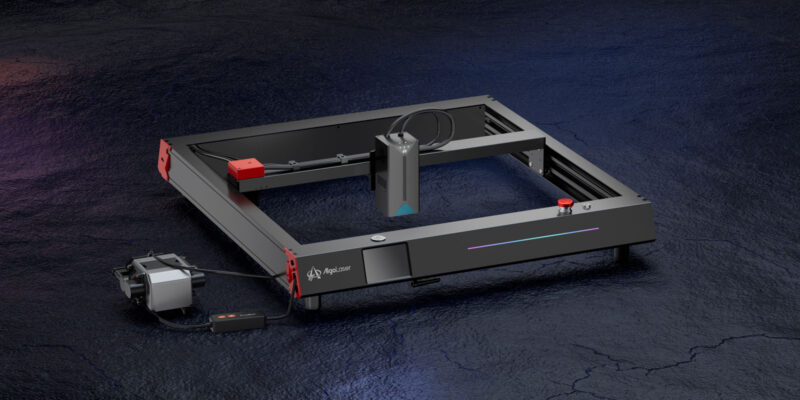Prusa Research launched its i3-style 3D printers late back in 2012. Since then, the company has grown tremendously and gained massive popularity in the 3D printing community. The Prusa i3 MK3 series and Prusa MINI+ helped the company establish a prominent position in the market.
The success of the i3-style printers led to the development and release of Prusa Research’s very first large format 3D printer, the Original Prusa XL. It was announced during the Formnext 2021 event in Germany and promises to offer the same level of quality, reliability, and user-friendliness as the company’s other 3D printers, but in a larger form factor.
Currently only available as a pre-order, the Original Prusa XL will be positioned as Prusa’s flagship 3D printer and comes with several exciting features.
Let’s take a look if the Prusa XL lives up to the company’s hype and if it should be your next 3D printer!
Prusa XL Features
Large Build Volume
The Original Prusa XL features a massive build volume of 360 x 360 x 360 mm. Compared to the company’s next largest 3D printer, the MK3S+, it stands out with a build volume that is over 4 times larger.
This build volume makes it an ideal 3D printer for large-scale projects and prototypes. You can easily 3D print a cosplay helmet in one go. Alternatively, you can fit many small pieces on the build plate at once, making it ideal for batch 3D printing.
Previous 3D printers from Prusa Research had a relatively small build volume, which could sometimes limit the variety of models you could print on them. In contrast, the Prusa XL’s large print area gives you more freedom over the object’s designs which comes in handy when printing large prototypes, jigs, fixtures, or large architectural models.
Along with its other promising features, the Prusa XL looks to be an excellent alternative to other premium large 3D printers such as the Ultimaker S5 and the Raise3D Pro 2. If you’re someone who regularly 3D prints large models or needs a more extensive print area for batch 3D printing, the XL’s large print area will help you greatly in your projects.
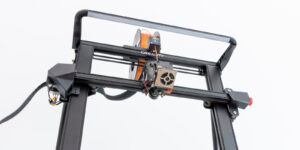
CoreXY Kinematics
Unlike the previous i3 style 3D printers from Prusa Research, the original Prusa XL utilizes a CoreXY mechanism for its movements. As a CoreXY 3D printer, it has the X and Y stepper motors mounted on the frame, reducing the moving mass in the 3D printer.
Additionally, the print head on the Prusa XL is designed to be small and lightweight, letting you achieve faster printing speeds. The CoreXY architecture also gives structural rigidity to the XL’s frame. All this together helps to minimize the vibrations that arise when printing at high speeds and reduces surface artifacts in the 3D printed models.
Prusa has included high-quality linear rails along with its CoreXY mechanism. The linear rails further help achieve smooth printing motions and deliver a superior print quality. Prusa’s CoreXY design benefits creators who need to 3D print at high speeds without compromising on print quality.
Updated Extruder with Load Cell Sensor
The Original Prusa XL’s extruder is fully redesigned and stands out from other direct-drive extruders. Prusa has labeled it the next generation extruder, or ‘Nextruder.’ It promises to be one of the most advanced extruders in 3D printing and is loaded with several features that are aimed towards improving overall print quality.
The Nextruder uses a load cell sensor that’s embedded into the heatsink. The sensor lets you use your nozzle as a leveling probe, eliminating the need for an external leveling probe, like a BLTouch. The Prusa XL achieves this by measuring the minute variations in pressure that act on the nozzle when it touches the print bed.
Prusa claims that the load cell sensor results in a perfect first layer every time, and you will not have to perform manual calibrations during the leveling process. The sensor can also detect heat creep, partial clogs, or nozzle jams by sensing the pressure differences in the nozzle. This helps in preventing print failures and reduces the chances of damage to the hotend.
Cycloidal Gear Drive
Another stand-out feature of the Nextruder is a cycloidal gear drive. The zero-backlash cycloidal gearbox uses a single large diameter no-slip gear to push the filament into the hotend. It gives you a high-gear ratio of 20:1. The significant gear size increases the grip on filament resulting in precise control of the material.
The combination of the cycloidal gear drive and the directly driven system constricts the filament path and aids in printing with flexible filaments, like TPU and TPE. This design also helps to maintain a lightweight extrusion system while delivering consistent extrusion quality.
Modular Bed Print Surface
Instead of going with a singular solid build plate, Prusa Research decided to use a modular bed design for the Original Prusa XL 3D printer. The XL’s 360 x 360 mm build plate is divided into 16 small portions of 90 x 90 mm.
Each of the individual sections of the build plate can be separately heated depending upon the print surface required by the model. For example, if you have a smaller model, you can heat a specific section of the print surface instead of heating the entire bed. This functionality makes the Original Prusa XL significantly more energy efficient than other 3D printers.
The modular bed also makes it easier to replace damaged sections of the build plate instead of changing the entire build plate. Lastly, you won’t have to wait forever for the entire build plate to heat up. A welcome addition, as many 3D printer users will know.
Prusa has included expansion gaps between the sections, which help control the thermal expansion during the heating process. These gaps can reduce warping issues, hopefully resulting in a more even and flat print bed surface.
Prusa might also use its segmented bed design in other Prusa 3D printers. The technology is easily scalable to more extensive print areas and comes in handy for 3D printers in many shapes and sizes.
Tool-Changing Capabilities
The optional tool changer is one of the most exciting smart features of the Original Prusa XL. At first glance, it closely resembles the E3D’s tool changer system. But on closer inspection, many minute changes in the Prusa’s tool changing system give it an edge over other 3D printers.
Prusa XL uses a mechanical tool-changing mechanism, which is highly accurate and locks the print head firmly in place without any magnets. You can load up to five tool heads on the XL at once, giving you multi-material and multi-color 3D printing capabilities. Every single tool head is individually configurable as per your requirements.
Using the tool changer mechanism, you can use different nozzle sizes for a single 3D print. This technique will help you save considerable printing time. Another possibility is to preheat print heads with high-temperature materials while in the print head bay. This can again reduce printing times, as you won’t have to spend time swapping filaments and waiting for the nozzle to get up to temperature.
Prusa’s load-cell sensor also eliminates the need for calibration prints giving you trouble-free tool swaps. The print head calibration is entirely automatic, and the system even uses a small calibration pin to calculate its offset position. Prusa claims they’ve tested the tool head swap mechanism for over a million swaps and only had trouble-free tool changes.
Furthermore, the entire tool changing mechanism is modular, and you can customize the number of printheads per your requirements. Prusa has hinted about the possibility of adding other tools to the line as well.
In the future, you can probably expect many optional upgrade options. Subtractive tool heads such as a CNC router, a laser module, or inspection probes all belong to the possibilities. This can let the Original Prusa XL compete with 3-in-1 3D printers, like the Snapmaker 2.0.
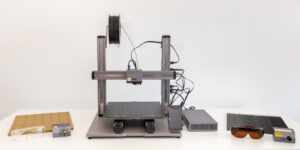
Other Exciting Features
RGB lighting
The Original Prusa XL 3D printer includes an RGB light strip that sits on the printer’s top and runs along its sidewalls. The RGB lighting provides enough illumination to properly light up the build area and give you clear visibility of the ongoing print. The lighting makes it easy to use cameras with the XL and will be helpful if Prusa decides to include a camera module with the XL in the future.
Klipper firmware
Klipper firmware is known for its optimized pathways and the ability to execute high-speed 3D printing. Prusa is currently considering the official version of Klipper for its XL 3D printer. The fast speed will be beneficial during large prints, letting you take full advantage of the Prusa XL’s significant build volume.
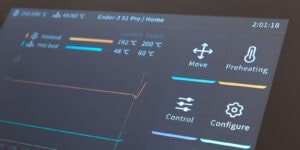
Prusa XL has the necessary hardware to support printing at high speeds, such as a 32-bit 3D printer controller and a CoreXY structure. The inclusion of Klipper firmware will let you fully utilize the XL’s hardware and print your parts in shorter times.
32-Bit Quick-swappable electronics
The Prusa XL utilizes a 32-bit motherboard as its primary controller. Additionally, each print head has its controller board giving you complete control. The Nextruder system, too, has its own electronics board and works in sync with the motherboard. These controller boards are designed to be easily swappable, ensuring easy maintenance and repair in case of any issues.
Although Prusa has not yet revealed the controller details, the 32-bit motherboard should come with extra RAM, additional EEPROM space, and more I/O ports than the outdated 8-bit electronics of the Prusa i3 MK3S+.
Prusa Connect
To improve ease of use, the Prusa XL features the Prusa Connect functionality, letting you remotely control and monitor your 3D printer. It’s a simple web interface similar to Octoprint, but it’s an Octoprint alternative more finely tuned for Prusa 3D printers. Just like with Octoprint, with Prusa Connect your printer connects to the internet and your local network using a Raspberry Pi.
You can attach multiple Prusa printers to a single account and monitor them from one computer without needing external software. This feature can be very helpful for print farms and other setups with several Prusa XLs on a single network.
Add-ons
Jozef Prusa’s team has also hinted at an optional removable enclosure for the Prusa XL. They showcased it in their demo at the Formnext event but have had no updates regarding it till now. The 3D printer enclosure they showed is collapsible and folds up easily when not in use. It covers the XL from all sides and is an excellent upgrade if you need to print with temperature-sensitive materials, like ABS or Nylon.
Prusa XL Specifications
| Prusa XL Specs | |
|---|---|
| Build Volume | 360 x 360 x 360 mm |
| Printer dimensions | 800 x 800 x 800 mm |
| Printing technology | Fused Deposition Modeling (FDM) |
| Extruder type | Direct drive extruder |
| Maximum nozzle temperature | N/A |
| Maximum bed temperature | N/A |
| Print bed type | Removable magnetic PEI sheet |
| Bed leveling | Load Cell-based fully automatic first layer calibration |
| Filament diameter | 1.75 mm |
| Compatible materials | PLA, PETG, ABS, TPU, ASA, etc. |
| Connectivity | Ethernet, SD Card |
| Slicing software | PrusaSlicer |
Prusa XL Price & Pre-Order
Prusa XL comes in three main variants and two categories, their price depending upon the number of extruders and the assembly type you decide on (fully or semi-assembled).
| Single extruder | Dual extruder | Five extruders | |
|---|---|---|---|
| Semi-assembled | $1,999 | $2,499 | $3,499 |
| Fully assembled | $2,499 | $2,999 | $3,999 |
The Prusa XL is currently available to pre-order, and you can book one for yourself by paying an initial refundable deposit of $199.00. The remaining price is paid once the printer is ready to be shipped to you. According to Prusa, the first printers have a shipping date of Q3 of 2022. If you book a Prusa XL now, you can expect it to shipping date of early 2023.
Verdict: Should You Wait For the Prusa XL?
In our opinion, the Prusa XL is a 3D printer that’s worth the wait. Its large build volume, extruder system, and modular bed are first in its class. These systems are designed and developed to deliver a professional 3D printing experience. The addition of the tool changer system extends its capabilities and gives you broad material compatibility and printing modes.
You can either wait for the first printers to roll down the assembly line or pre-order immediately. Prusa is a reputable brand and has delivered excellent results with its previous 3D printers, and the Prusa XL should be no different and live up to its hype.
